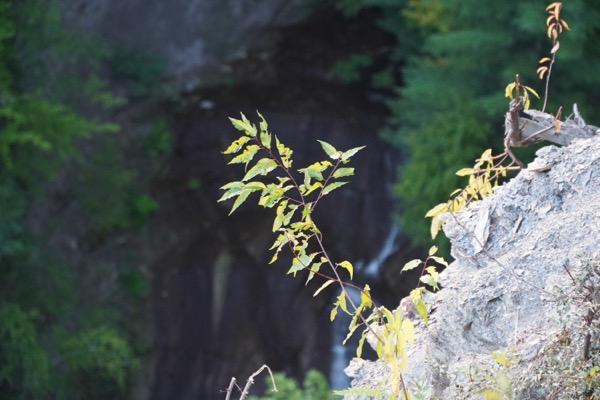Category: article
You are viewing all posts from this category, beginning with the most recent.
Acadia Day One
Lets get going by 9 Jane said. No problem, time for coffee and morning puzzles etc. My watch and phone said it was only about 8:15 and Jane was pacing, “ready??” Her iPad said it was 9:15. Some of our devices had not made the switch from Atlantic to Eastern timezone. Not surprising given the lack of internet connectivity around Acadia.
The result was that we got an early start on our hike up the Beehive Trail, which was good because we definitely beat the rush. Here are some pics to highlight our hike/climb.
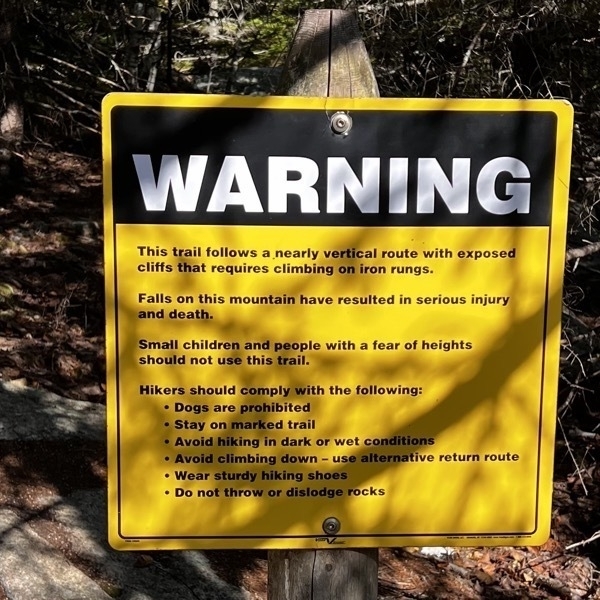
Yep, this hike features vertical climbs up metal rungs. A couple were even past vertical. I must admit that the pictures definitely look more dangerous than it felt at the time.
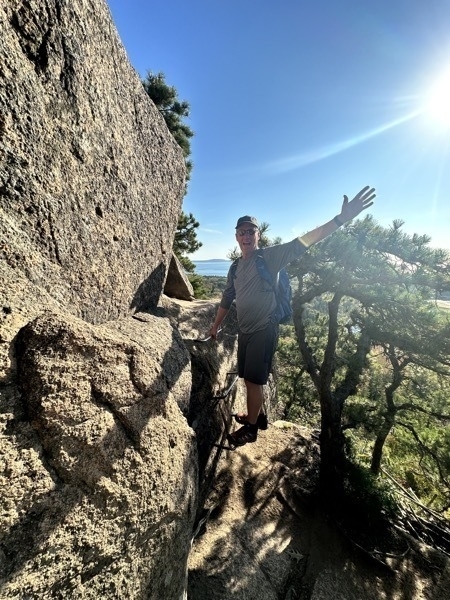
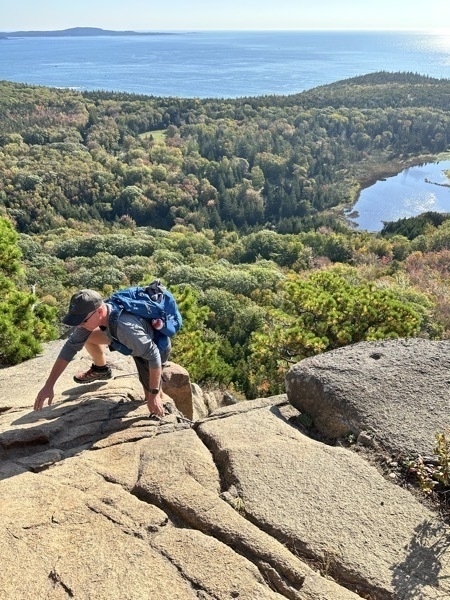
The climb was definitely worth it as you could see forever, and it was beautiful.

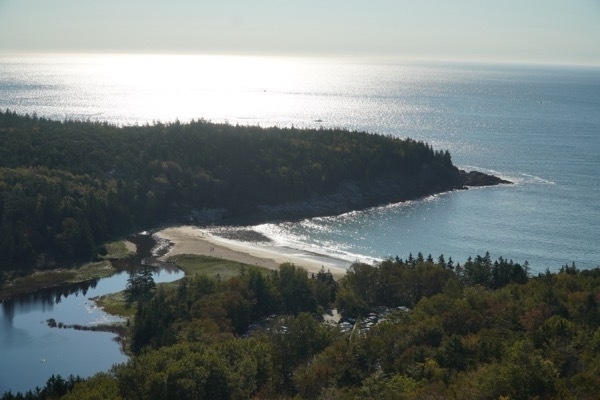

With the hike finished we headed back to the camper. The sun and solar panels had already done their job of recharging the batteries for the camper. We had worked up an appetite so I cooked some hash browns, bacon and scrambled eggs on the griddle.
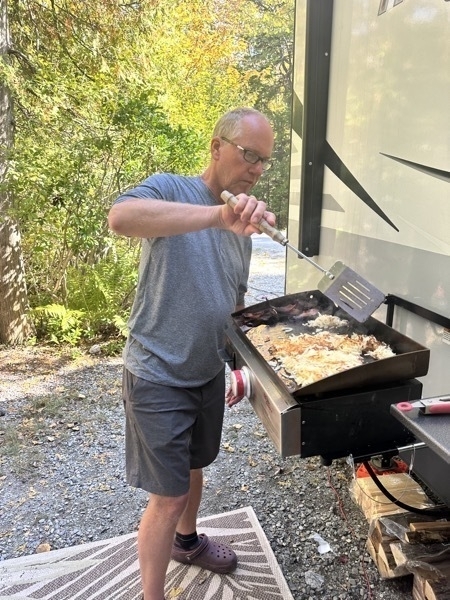
Acadia has highways, park roads, and carriage roads. The last are thanks to the Rockefeller’s from way back. The carriage roads are for bikers and hikers and horses only. So it is a great way to see the park free from traffic. Getting to the carriage roads from our campground, however, is a bit of a challenge. We had to start on one of the park roads for a few miles and then walk our bikes up the bank to the carriage road once we got there.
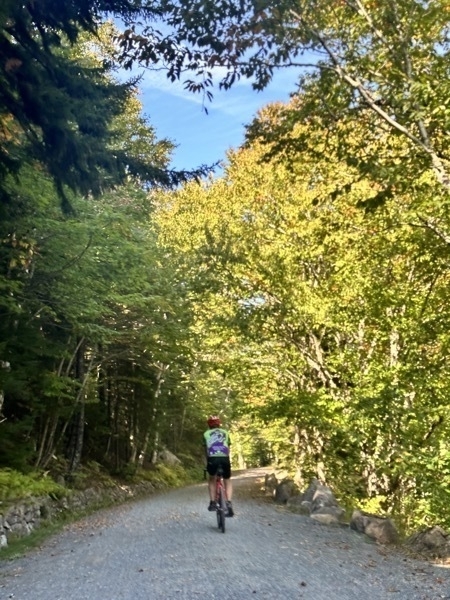
We really enjoyed Jordan’s pond and Eagle Lake and the Bubble Pond… The fall colors were really brilliant
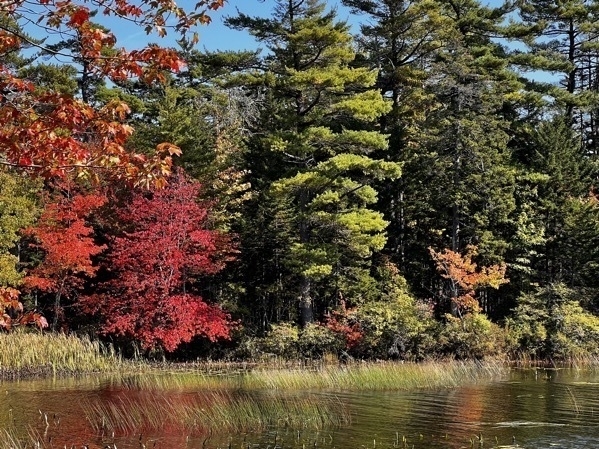
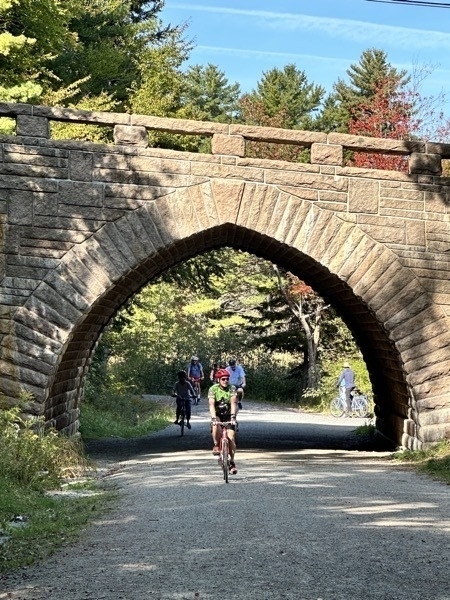
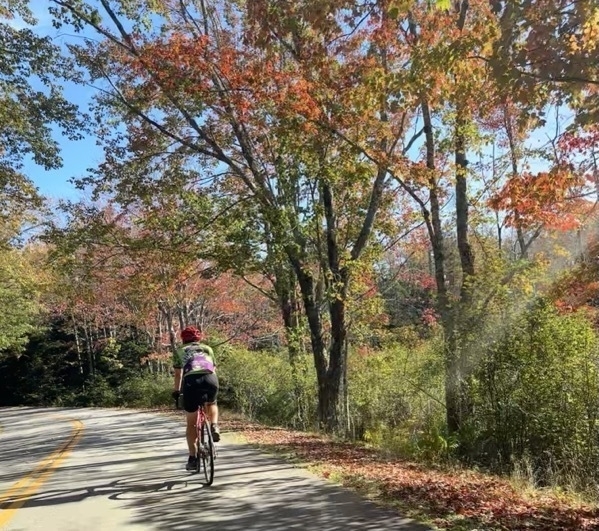
The last bit of our ride was back to hiking. To get from the carriage road to the highway that brings us back to our campground required some fancy maneuvering!
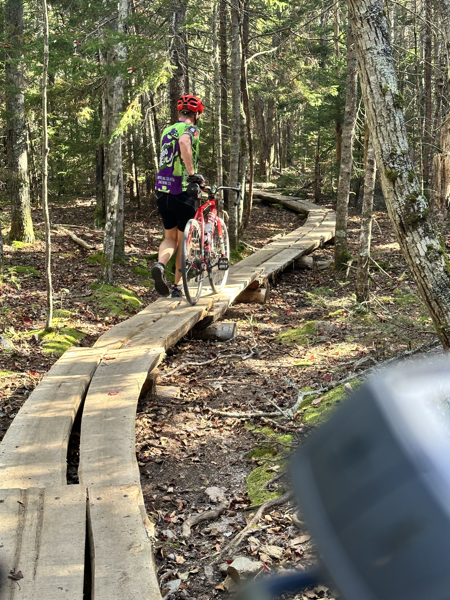
With plenty of exercise for the day, we rested for a few minutes and then went in to Bar Harbor where we had a dinner reservation. Bar Harbor was busy I can’t imagine what it is like there during the summer months. But we found a brewery with good WiFi to catch up on a few things and then walked around the shops before heading to Geddy’s for some calamari and pizza.
It was not a late night, as we need to get up at 4:45AM to drive up to Cadillac mountain to watch the sunrise…
Halifax for Jane's big six oh
Halifax has a nice food scene and a pretty boardwalk along the bay. We saw several cruise ships leave and arrive, and got to try a local specialty. A Donair.
A Halifax Donair shares some history with a Gyro, except that they are made from beef and have a special Halifax sauce. Crispy thin sliced beef with a creamy, sweet, garlic sauce with plenty of tomatoes and onions. We split one from a shop on the boardwalk so as not to spoil our appetites for Jane’s birthday dinner.

The boardwalk was fine, but I wouldn’t say spectacular. We found a nice Irish pub for some drinks, and they had a live band. So it was fun to sit and listen. Not as cool as the ceilidh back on Cape Breton, but still good.
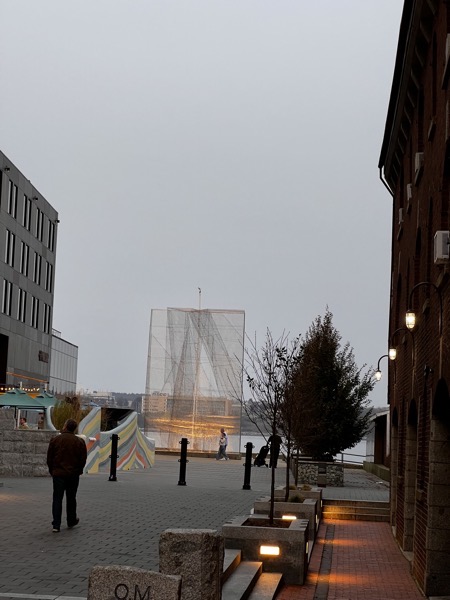
Birthday dinner was at The Bicycle Thief restaurant. It was a very nice meal, Jane had Seared Atlantic Halibut with brown butter & parmigiano fregola, charred asparagus, vino bianco, roasted sweet tomatoes, lemon & caper beurre blanc. I had Old-School Lobster Thermidor, Whole NS Lobster, wild mushrooms, shallots, Brandy crema, gratinéed with breadcrumbs, gruyère & parmigiano, truffle spaghettini & fresh asparagus. Both were delicious. We had a nice bottle of Chardonnay from Long Meadow Range in Anderson Valley. For desert we split the Creme brulee… slightly warm, with a really crispy crust, in short perfect. Top that off with a little sip of Port or Courvoisier and you have completed a near perfect meal.
Riding the Adventure Trail in Nova Scotia
The plan was to bike about 14 miles to Lunenburg, have some lunch at a brewery, and then bike back to where we parked. Drive back to the camper and make some Peruvian chicken for dinner. That was the plan. It was a beautiful day, It was a beautiful ride, although the trail was a bit soft in a number of places, and in a few it was completely washed out.
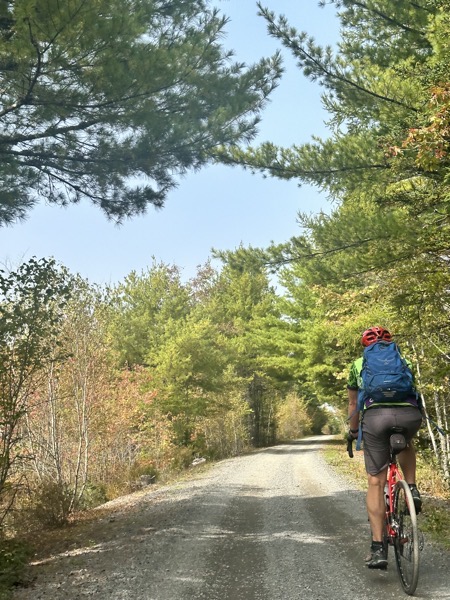
However, 15 miles into the 14 mile ride we called a halt to consult the map. Somewhere along the way we had missed a turn that we didn’t even know to look for. Now we were almost to Bridgewater, quite a distance from Lunenburg.
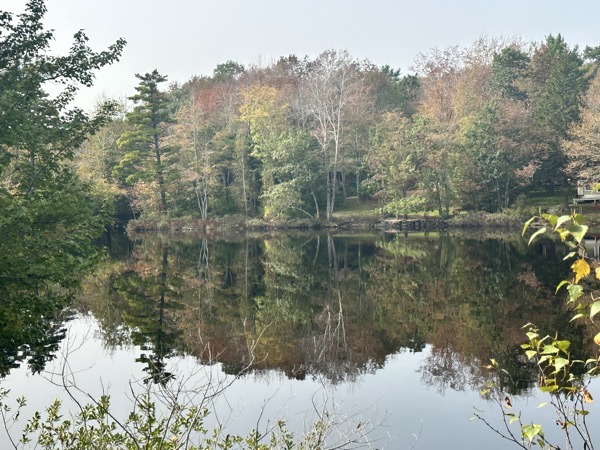
What to do now? Trying to make a triangle out of the situation was not a good solution. No trails from here to there, and the distance would have made the ride too long. So, we decide to turn back, maybe stop at a brewery along the way back, and see where to go. Riding along and discussing the options further, we decide to just head back to the truck and then drive from there to Lunenburg. Jane really wanted to see Lunenburg as it is a UNESCO site.
To get there we had to drive through Mahone Bay. What a zoo! We drove into their annual Scarecrow Festival! People everywhere. Cars everywhere. Astronaut scarecrows, firefighter scarecrows, They were everywhere. Kind of funny and clever. One of the few things we didn’t take a picture of, sadly.
Eventually we made it to Lunenburg where we found a good viewpoint to take a photo of the town, with its colorful buildings and tall ships in the harbor.
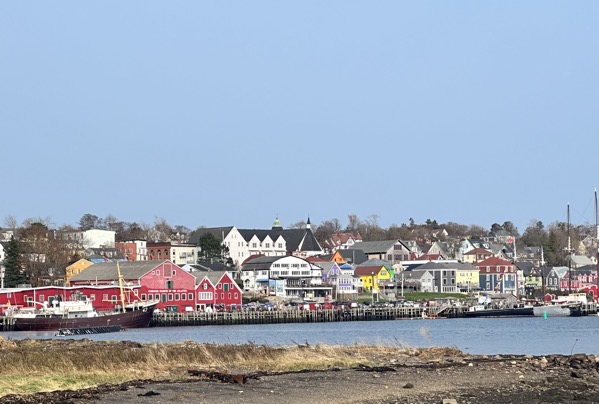
Around four O’clock we parked and walked to the Shipwreck Brewery tap room. The smell of pizza was a little overwhelming as we walked in! We hadn’t much to eat, and had just ridden 30 miles. After looking at the menu we decided the chicken could wait! One small pizza and one lobster roll to go with our beers please.
The Cabot Trail
I have to admit I was a little whiney. Not yet 7am and Jane was ready to go. It was barely even light outside. But we had to get going. We are driving the Cabot Trail today, around Cape Breton island including many many short stops in Cape Breton Highlands National Park. Spoiler alert… even though I was a bit grumpy starting out this was one of my favorite days. This drive is just so beautiful. In Jane’s notes it was described by some other blogger as follows:
The Cabot Trail is a road that hugs the Gulf of St. Lawrence on the rugged northwestern edge of Nova Scotia, where around every bend you want to pull over, spew expletives of joy at the stupendous vista, and take another snapshot.
Our first fun stop was to take the worlds shortest ferry ride on the Englishtown ferry. We had a lovely chat with the ferryman during our three minute crossing which covered everything from the state of education to English Premier League football, to the relative strength of various hurricanes, to whether the Packers (he saw our Wisconsin license plate) would win their Thursday night football game. We covered a lot of ground!
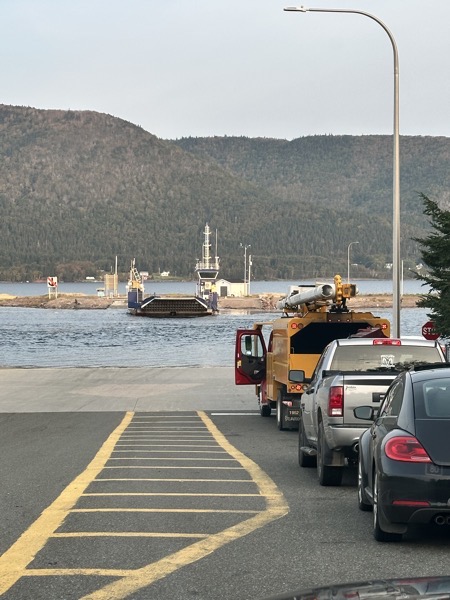
Our next stop was Middle head. A really nice hike which we cut short because we were still worried about time. Jane had read that it was really difficult to get the whole loop done in a day
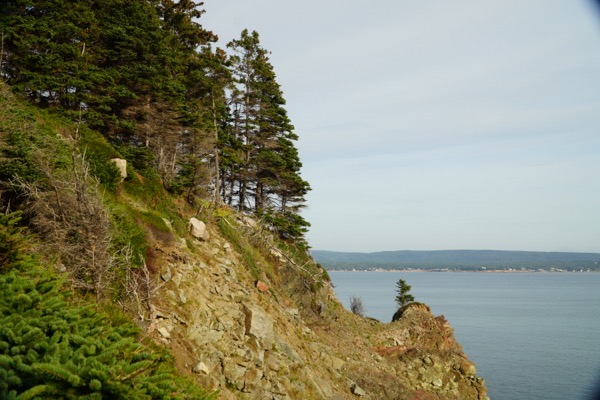
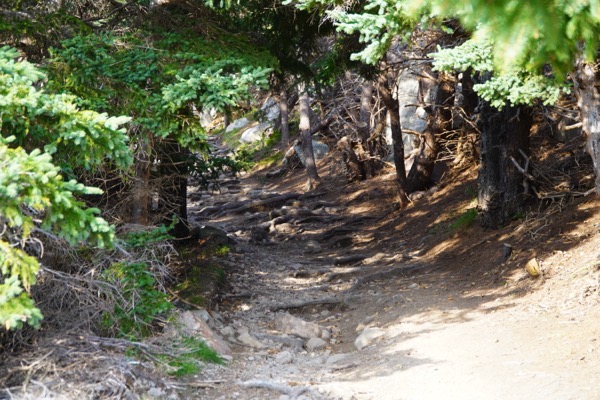
After that it was just turnout after turnout of stopping to take in the scenery. Our next real goal was to do the Skyline hike.

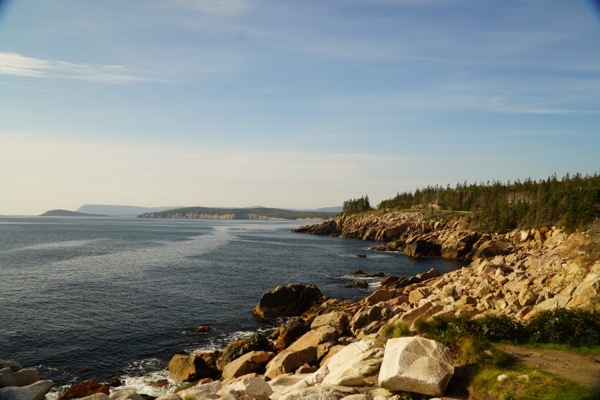
The skyline hike was four miles out and back. With a set of boardwalk steps at the end that give you a pretty spectacular view of the Gulf of St. Lawrence.
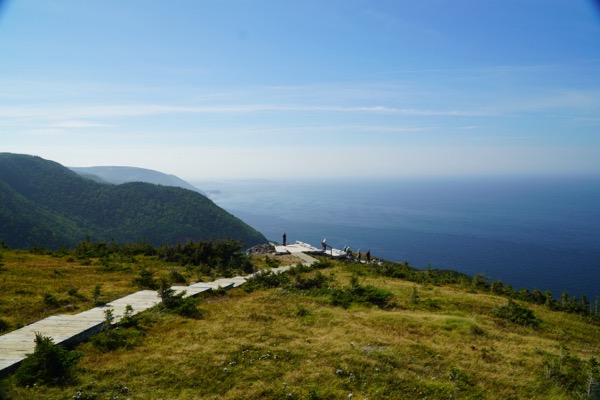
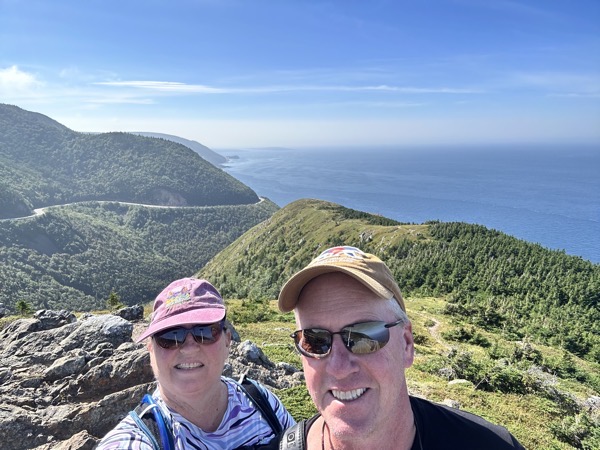
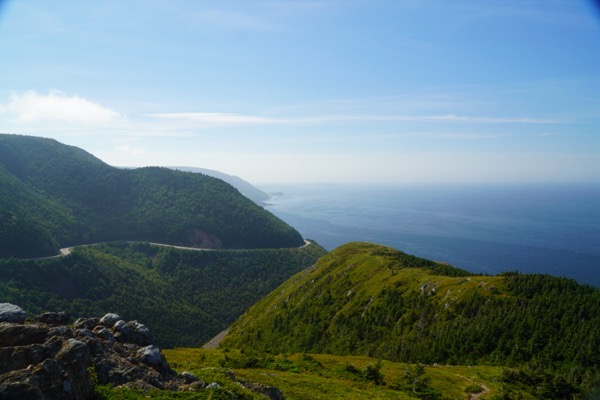
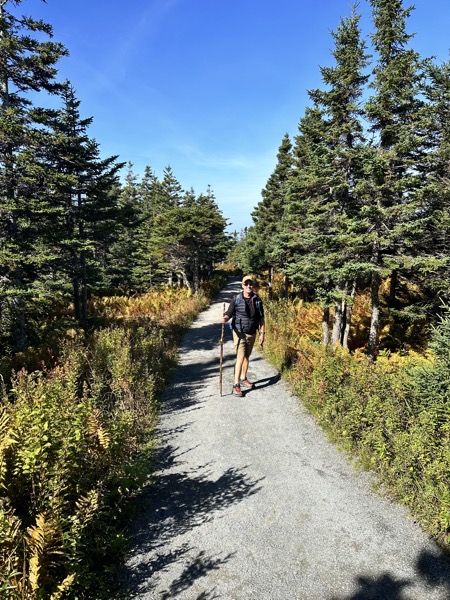
More scenery followed the Skyline hike…until we arrived in Cheticamp, where we decided to stop for lunch at the Doryman’s pub, rather than eat another day’s worth of turkey and salami sandwiches. We had a great view of the bay and I had fish and chips and Jane had chowder. The chowder was great. My irish red ale was also very good. We think that our waitress secretly could not believe that Jane would like the IPA she ordered and so brought her a bud light instead.
At the end of the trail, Jane made a “wrong turn” that led us to the Big Spruce brewery instead of our camp ground. We enjoyed a couple of pints before heading back to relax for the evening. We made a campfire, thanks to our neighbor who gave us some nice dry kindling and paper to get it going! We were still very full from our mid afternoon meal that we warmed up some leftover pizza on the Traeger for an evening snack.
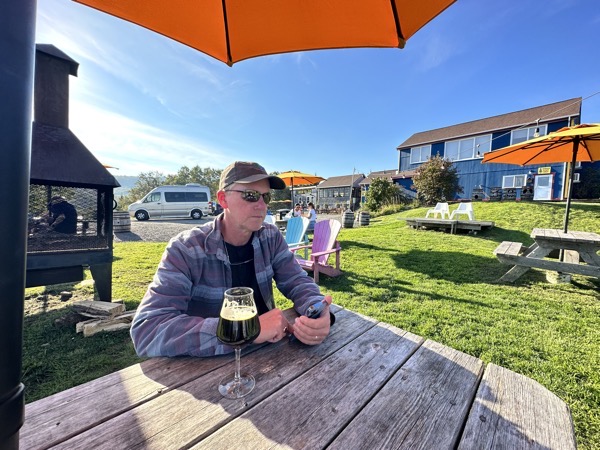
The Table
Last night we had a fabulous dinner experience! On Prince Edward Island there is an old church, that once was a barn, but is now a restaurant. It is open every night for dinner for one seating of around 20 people. Their menu says they are “a love letter to Canadian food and wine.” The menu changes every week, and they don’t repeat, ever, at least not in 8 years.
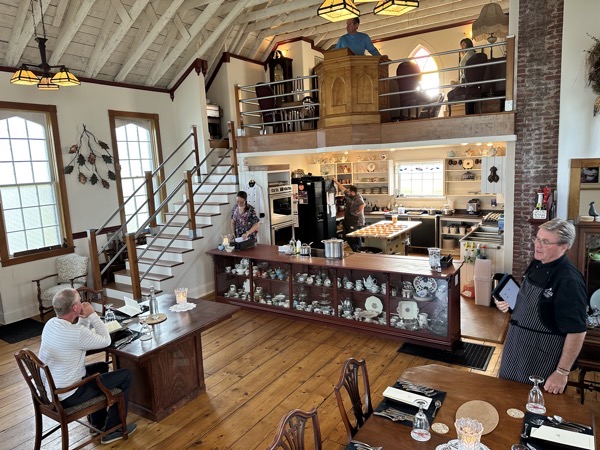
All the foods are local, that is they use ingredients from PEI that mostly come from just a few km away. They don’t use any ingredients that are not grown in Canada. So, no lemon, or lime, or black pepper. Instead they make pepper from the flower cluster of the Green Alder, They are super creative and the food was just awesome. One of the highlights of the night was the Halibut. One of their friends/suppliers, a fisherman, showed up on their door a couple of days ago to let them know he had a 50 pound Halibut he had just caught, he thought they might want it. We are glad they did!
The kitchen area is open for everyone to see the small staff working to prepare the next course. And before you eat the course the chef explains what you are getting. Then as you are eating he walks around to answer questions or just chat with every table. They pair each course with a Canadian wine. The result is a 7 course meal that goes from 5:30 - 9pm, a beautiful night of food and drink.
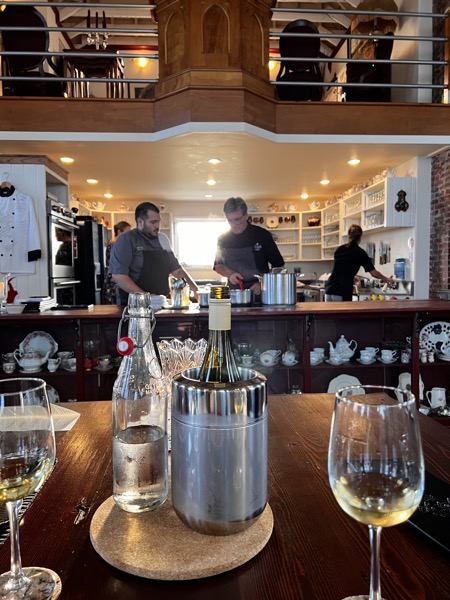
- roasted carrots, marinated carrots, cows’s blue cheese fritters, basil aioli. The blue cheese fritters (Choux batter with blue cheese mixed in) were better than any fried cheese curds I’ve had in my life!
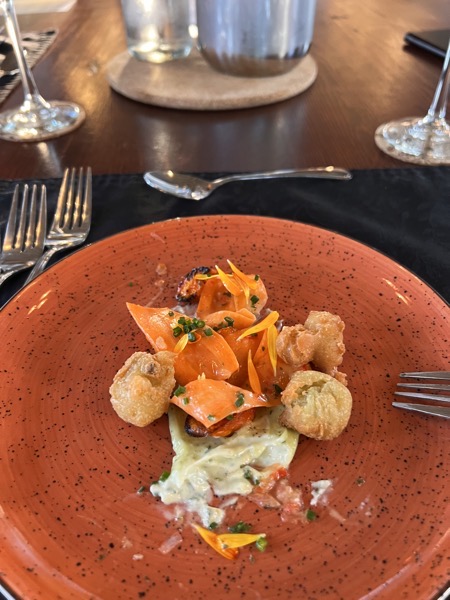
- celery root soup, roasted celery root, pickled mustard seeds, celery.
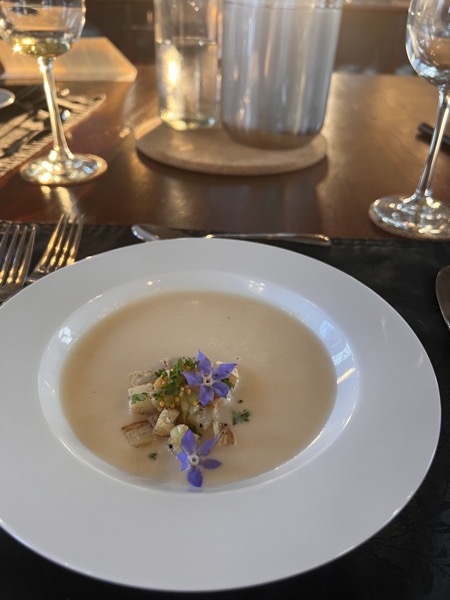
- french river halibut, clam cream, dill oil potato, chives. SOOOO GOOD. We were imagining the staff milking the clams, but it turns out it is more like homemade clam sauce mixed with cream and then reduced.
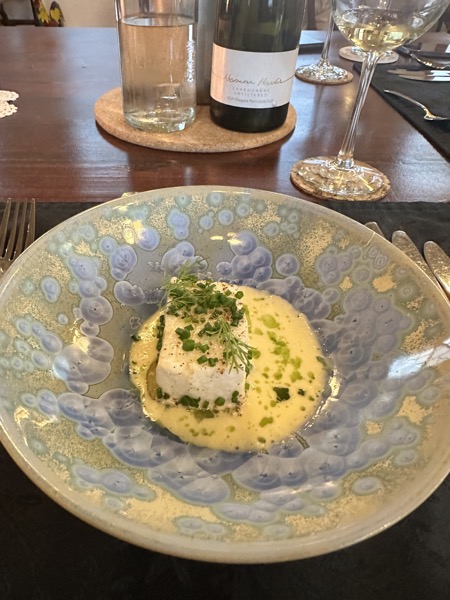
- belle river rock crab mezzalunes, charred tomato aioli, cured egg yolk. What? Cured egg yolk salted and dried and then they grate it over the pasta! I’m gonna try it.
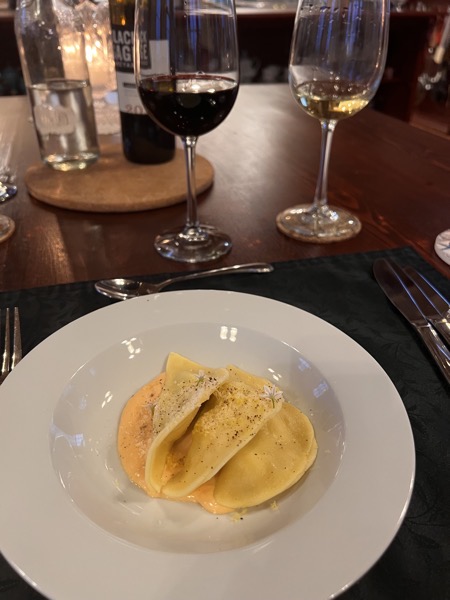
- cold water shrimp, our bread, herbs, crispy shallots. The chef described it as a mid meal snack! Yummy.

- braised island short rib, potato puree, market vegetables, ox tail jus. I’ve hated beets for 50 of my 59 years. But I have to admit that these were not bad!
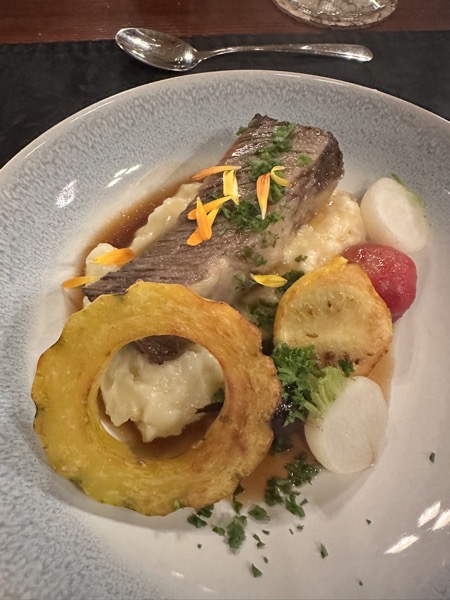
- geoff’s apples, maple granola, mint oil, whipped sweet clover cheesecake. The apples were warm, but still crunchy, and the whipped cheesecake was like a thick whipped cream. A delicious ending.
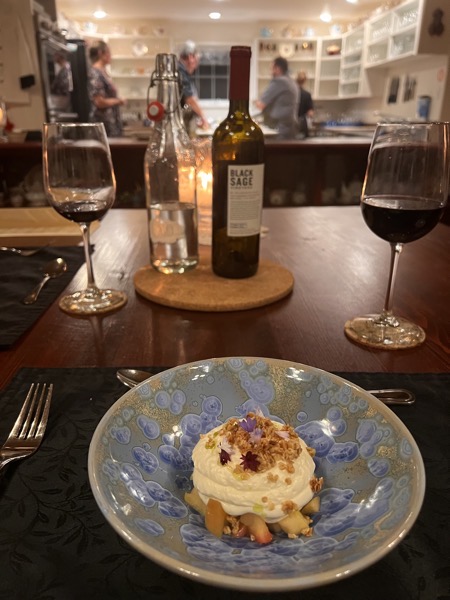
Jane’s favorites: The carrots and the Halibut
Brad’s favorites: The Halibut, the carrots were a big surprise and the fritters were just so good. Learning about cured egg yolks.
Prince Edward Island
This morning we woke up at almost 7AM (Atlantic Time) way late for us usually. I lost whatever unspoken contest we had, and got out of bed to turn on the heater! We like keeping the heat off overnight and sleeping in the cold rather than having the heat kick on and off.
We decided to drive to the beach to see if we could see more than last night, and we ended up finding a very nice board walk with some great views
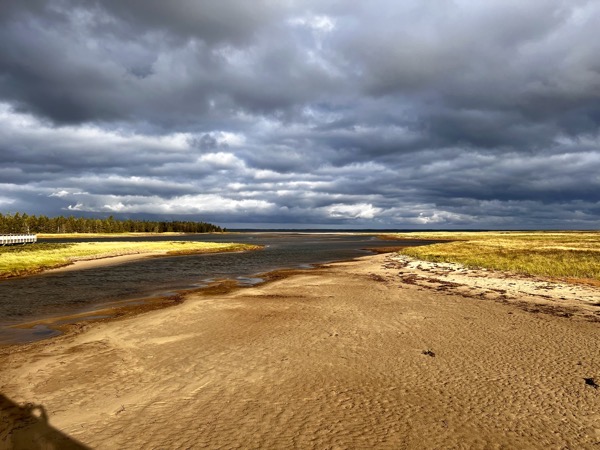
From there it was only a 3 hour drive to our campground on Prince Edward Island. I can’t imaging what a zoo this place must be during the summer but at this time of the year it was very quiet. They had assigned us a pretty lousy campsite but the nice person checking us in just said to drive around and pick whatever spot we liked, and give her a call on the off chance that someone else was going to be here and had booked that site. Even with all of that it took us more than an hour to get situated. The sites were so uneven and once we got the camper in a decent position the steps would not go down far enough! In and out, up and down… Usually it takes us about 10 minutes to back in and level up. It took us almost an hour!
We had hoped to bike, but it was very cloudy and windy today so we didn’t have any desire to bike. So we drove the coastline, and around the area. Here’s a very attractive photo of the shoreline with a not so attractive picture of my shirt blowing in the wind.
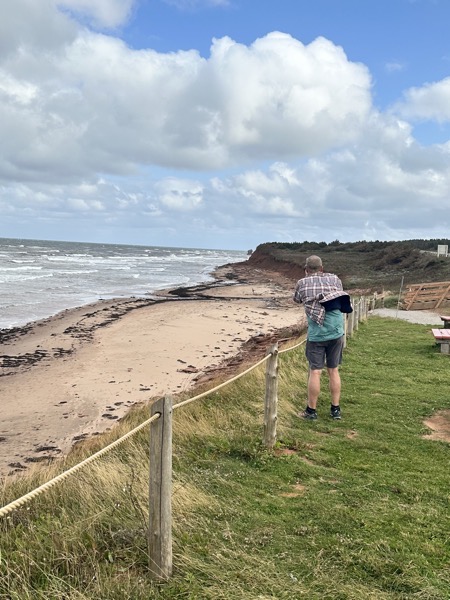
A more interesting picture of the beach.
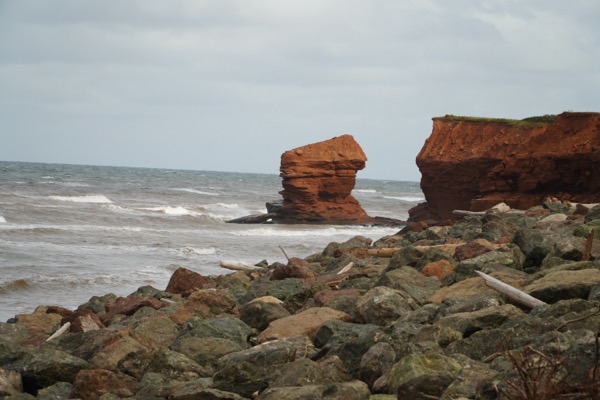
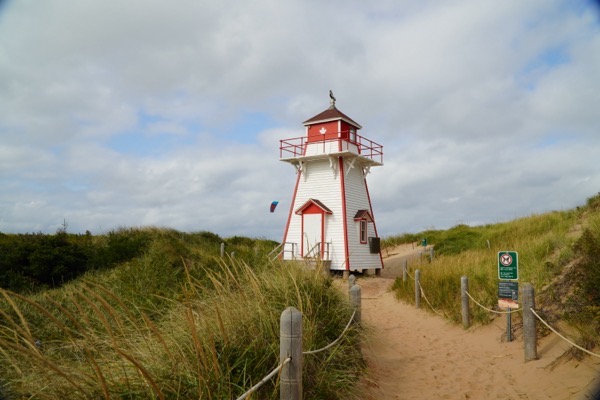
The National Park closed last week, and things have shut down very quickly. So most of the shops and attractions were closed for the season. Thankfully our dinner place for the evening was not one of them!
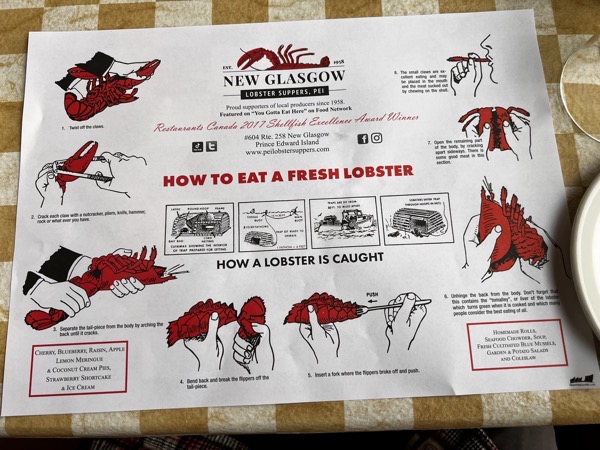
It was a four course dinner experience. You got a 1 pound lobster plus unlimited chowder and mussels and salad and desert. it was all very good and we had the nicest server who talked with us and answered all of our questions about the area. This place goes through 20,000 pounds of lobster and 90,000 pounds of mussels every year. They have a huge lobster holding area that they feed with fresh and salt water to keep them happy/slightly sedated before they are cooked for us. The mussels are also locally “cultivated” and were delicous.
Here I am diligently working on my Lobster!

Bless the Broken Road
No I haven’t suddenly become a Rascal Flatts fan! But 40km into the 120km stretch of NB 108 (New Brunswick 108 East) that phrase came into my mind. Why? Because it is quite possibly the worst stretch of highway we have ever been directed to drive by any maps application ever. Not counting the horrible dike road incident at Lake Chilcot Arkansas in 2021. That was clearly not a highway. The first warning was that there was no gas or service for 120km. The next bad sign was that the speed limit was 80km/h but we couldn’t drive more than about 50! The road was broken! When Jane posted on the RV group about our experience this was the reply.
Who or what gave you the option of taking the 108? When it was called the Renous shortcut way back when, that road was take at your own risk, things have not changed.
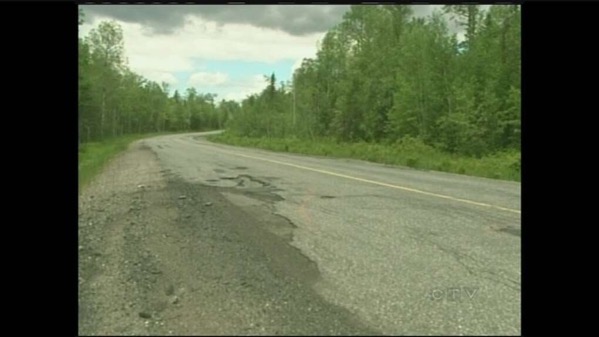
The road was broken for miles and miles.
But God bless it!! it was beautiful. And totally devoid of cell service!
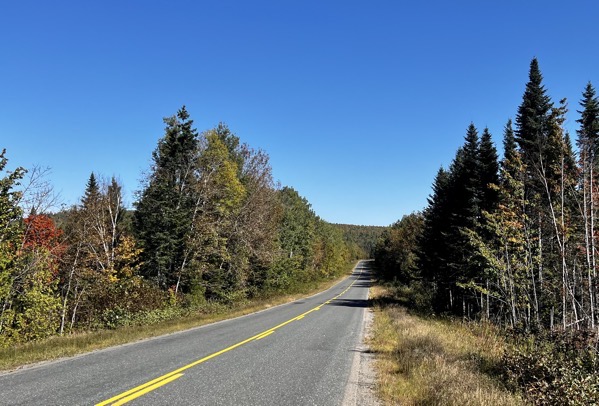

Our stomachs (and bladders) were churning from the bumps so badly that we stopped at the first gas station 1.7 km from the end of the road. But their network was down. So gas was cash only. Ummm we have some US$ but very few loonies. Thankfully gas (at least petrol) was not the point of the stop. So we moved on. Never have we been so happy to get on a smooth highway!
And we arrived at the Kouchibouguac campground on Saint-Louis Lagoon on the Gulf of St. Lawrence. Eight hours after our six hour drive started. But… this is why we call it an adventure! You never know what you are going to encounter…
Our first order of business after getting the camper settled, by which I mean picking up everything that was strewn all over the floor. Everything from an entire box of frozen meat from the freezer to cans of soda and ice trays. What a mess. After getting it all cleaned up we decided to walk down the trail toward Kelly’s beach… Unfortunately we discovered that the bridge to the beach had been removed for the season! Grrrr 2.2 km of constant mosquitos for nothing! Adventure! We turned around and headed back to the camper.

Life is not so bad! Bless the Broken Road.
Catching Up
I’ve missed a couple of days along the way, so with today being a “day of rest” I thought I could catch us up.
Corning
This is going way back, but I did forget to write about our trip to the Corning Museum of Glass. Very very cool. We are not “museum people” but this was fun, educational, interesting, interactive, … Who knew there was so much different science and engineering behind “glass!” We started with a glass etching experience and then went to the hot shop to see them blow a huge glass light fixture. If you have never seen a glass blowing demonstration you really should. Mathematics, Physics, Art, Engineering, it’s all there.
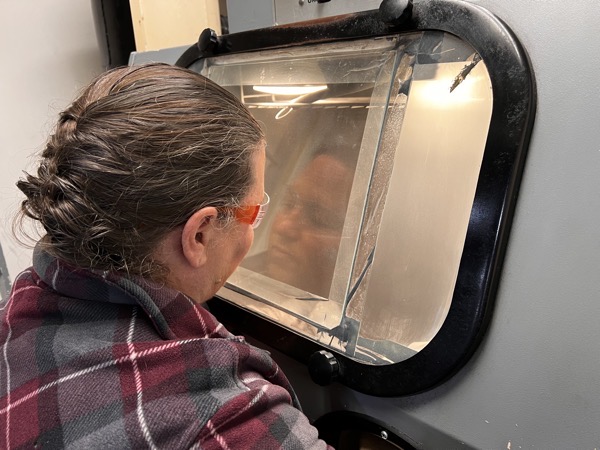
Here is Jane etching her glass. I made a Runestone glass!
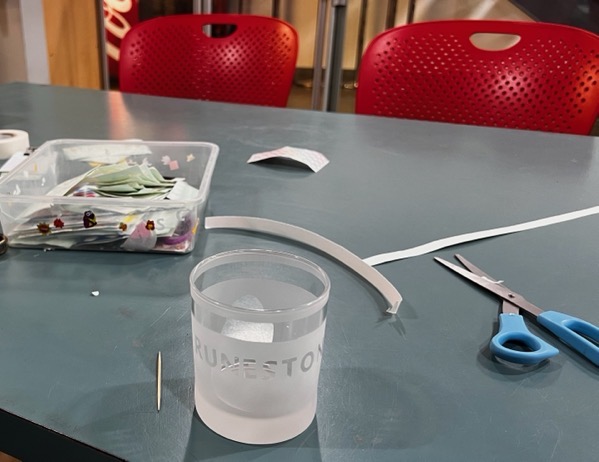
Montreal
We drove from Stowe to Montreal, beautiful scenery but we are still too early for the change in color. We knew that going in that we were likely too early for some places and would be too late for others by the time we were finished. But it was pretty. Kind of funny crossing the border. I know it’s no joke, But kind of odd to the average tourist. Do you have any firearms? No. Do you own any firearms? No. Do you have any defensive weapons… like pepper spray or a hunting knife? Ummm no. Does the hatchet for splitting wood count? What about my chef’s knife? We are towing a camper after all. Then there were the questions about alcohol… Of course we have some wine in the camper. Are you visiting anyone? No. Do you know anyone? No. Will you meet anyone? Ummm, I imagine we might meet people while we are camping or eating out… it’s hard to not meet people.
My vision of Montreal was influenced way to much by the Canada pavilion at EPCOT. It was nice, but felt more big city than anything, even in old town. It was cool to see the city at sunset, especially the Olympic stadium in the distance.
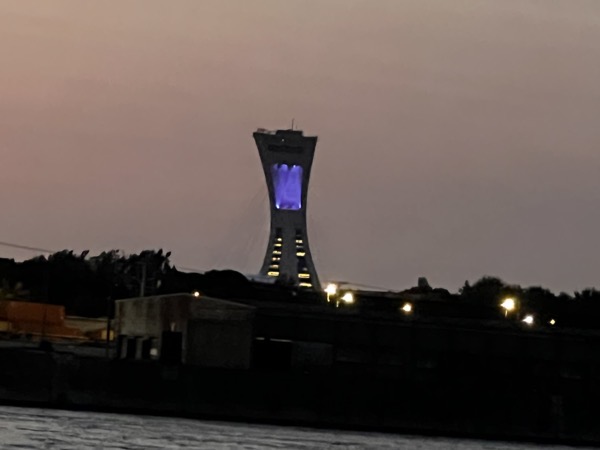
In the morning we took a short bike ride, and got an even better view. A very cool structure.
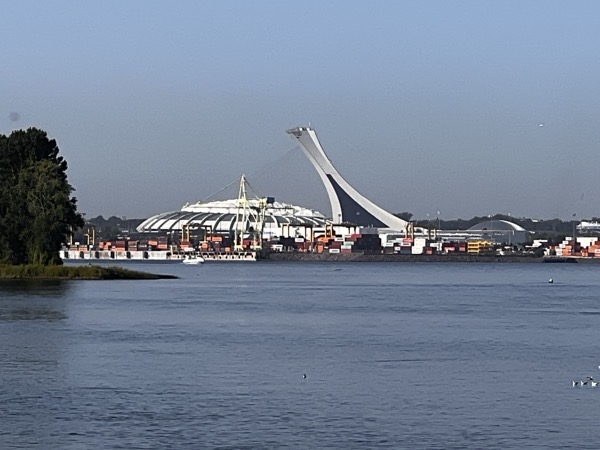
Maybe the oddest thing we saw was a driver missing the corner and plowing into the retaining wall right on the edge of a restaurant. People pulled out their phones and started filming, then the driver and the passenger tried to switch places. It was hard to tell what was going on, and we had to catch our ferry so we didn’t wait until the police came.
Just before we fell asleep Jane said “I smell skunk”. Yes, there it was the distinct smell of skunk. Was there a skunk under the camper? Did one of the stray cats around the campground get into it with a skunk and was now lurking around our campsite? Should I go out into the dark and try to figure it out? In the words of Marlin Perkins “I’ll stay safely in the camper” We will never know, the smell was gone in the morning.
Quebec City
Quebec city definitely had more of an old European vibe to it! We enjoyed our walk, even if it did involve over 310 stairs! We walked and wandered and then enjoyed a wonderful Italian dinner in the upper town. After dinner we made our way back through the streets toward the ferry.
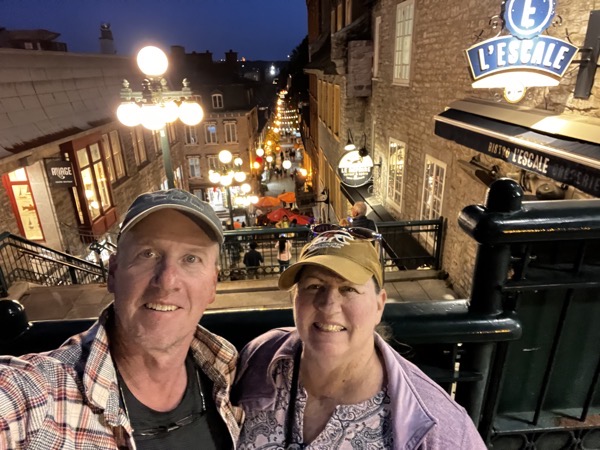
And enjoyed the view of Château Frontenac as we headed across the river.
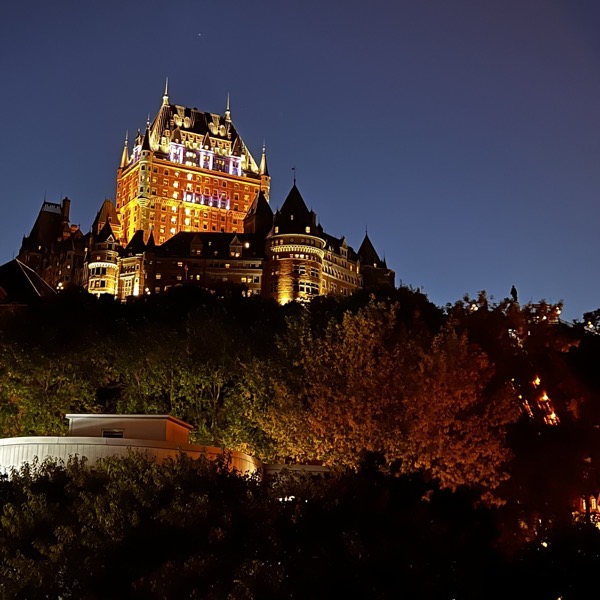
Today is mostly a day of rest, doing laundry and catching up on some work… But we did get in a 26 mile ride along the river this afternoon.
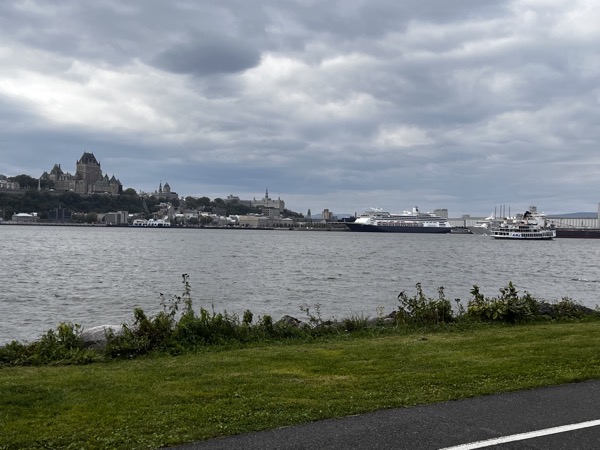
You can see Château Frontenac in the daylight along with a couple of cruise ships. We also saw the last bridge across the river as we head toward the ocean.
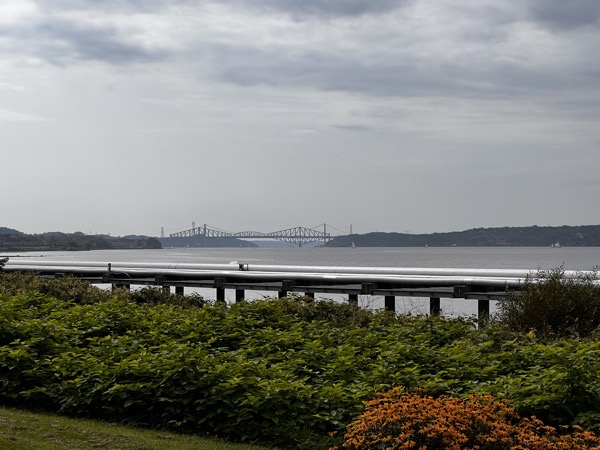
The plan for tonight is to relax, have a some burgers at our campsite, and prepare for a long (8 hour) drive tomorrow to New Brunswick. We will be happy to get back to a province where English is the dominant language! It has been so long since we have visited a country where we do not speak the accepted/dominant language. Of course the Canadians are very welcoming, friendly, nice, and do their best to understand us. Especially if we try to greet them in French or say a few words. TIL that when you are biking in Quebec you can’t expect people to understand “on your left” instead one should say “à ta gauche” I’m not sure “on your left” is a universal bike thing, or whether I’m just really bad ad saying it, but it did not get the normal response!
Waterfalls
Today our goal was to explore some of the other state parks and hikes near Watkins Glen, verifying whether Ithaca really is “Gorges”, and try out a few wineries on the shores of Cayuga lake. It was a good day!
We started out with the Gorge Hike at Robert Treman State Park. We were there early enough to get some beautiful morning light.
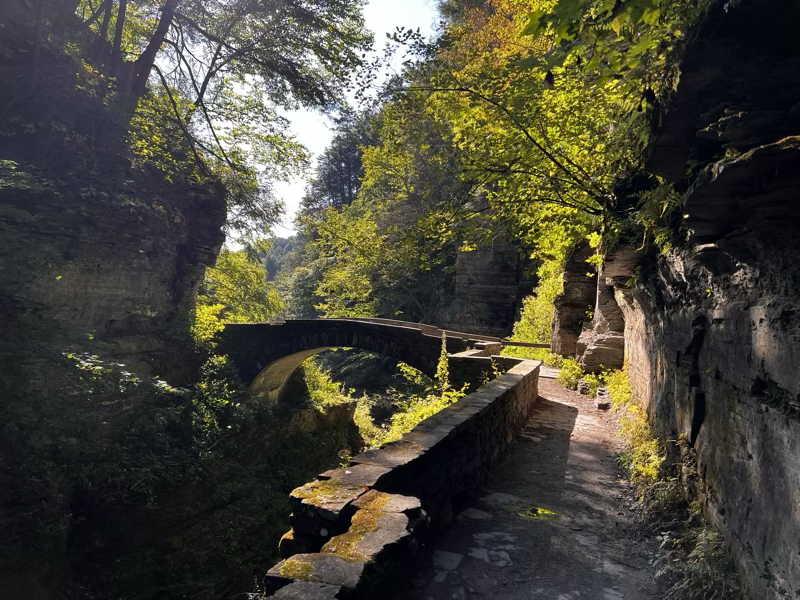
The hike takes you to the top of Lucifer Falls, and then you descend The view looking back and up is also amazing, but then you realize you have a lot of climbing to do to get back where you started. But it was such a beautiful morning and we almost had the trail to ourselves.
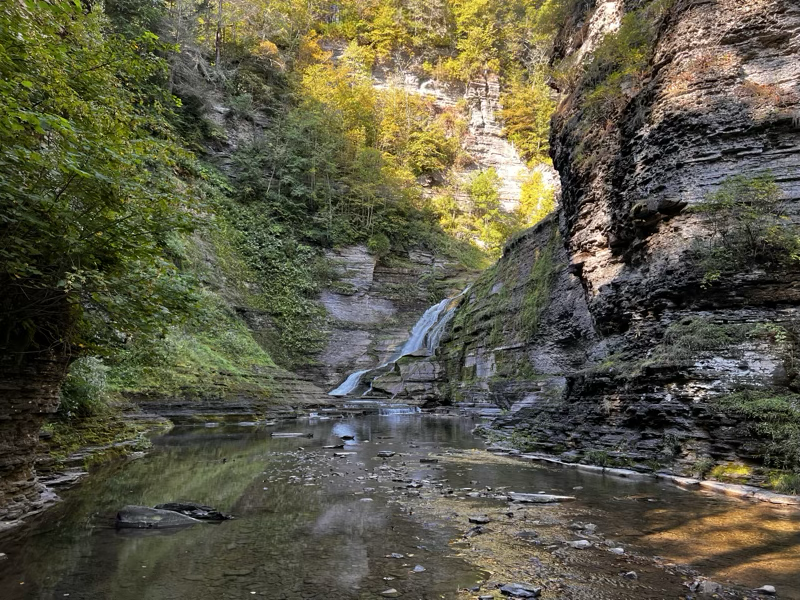
After this hike we made a quick stop at Buttermilk Falls just on the edge of Ithaca.
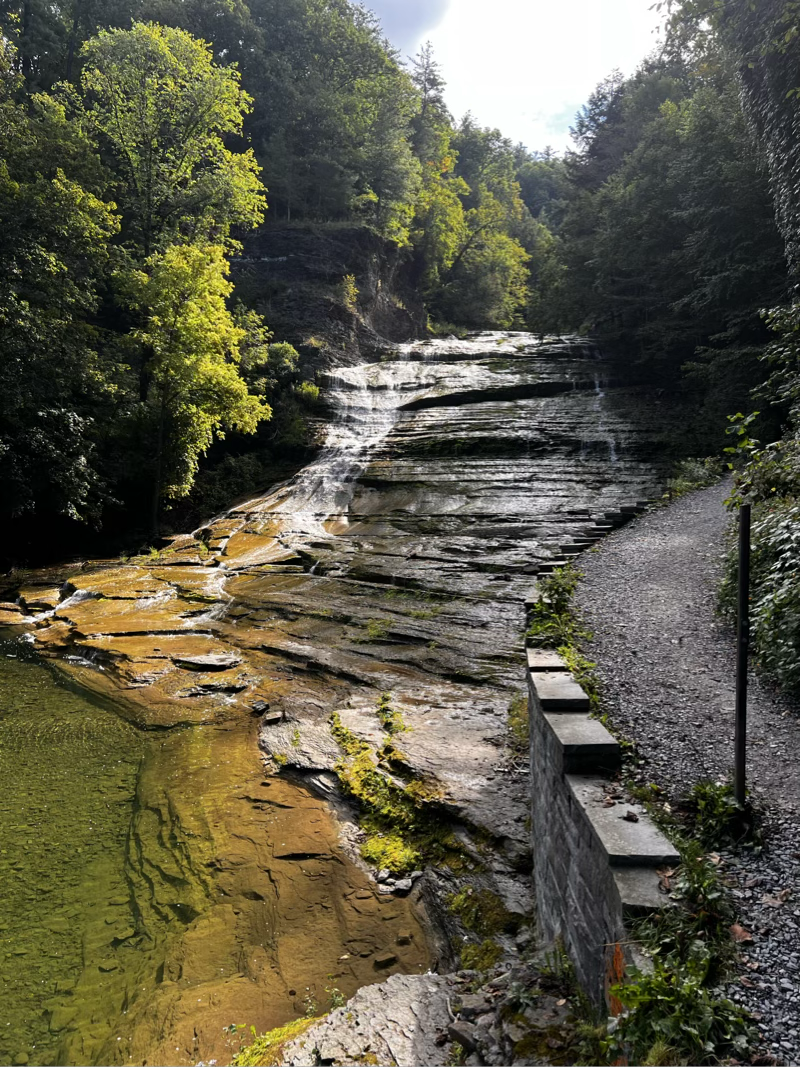
We were noticing that the falls were a bit dry compared to the descriptions and other pictures we have seen.
Both Jane and I have been to Ithaca before, back when Kaia was doing her college search. But, that was in much cooler weather. It was nice to be able to explore. The motto of Ithaca is “Ithaca is gorges,” and it is a very pretty town, very hilly, but areas and paths along the waterfalls leading right to campus.
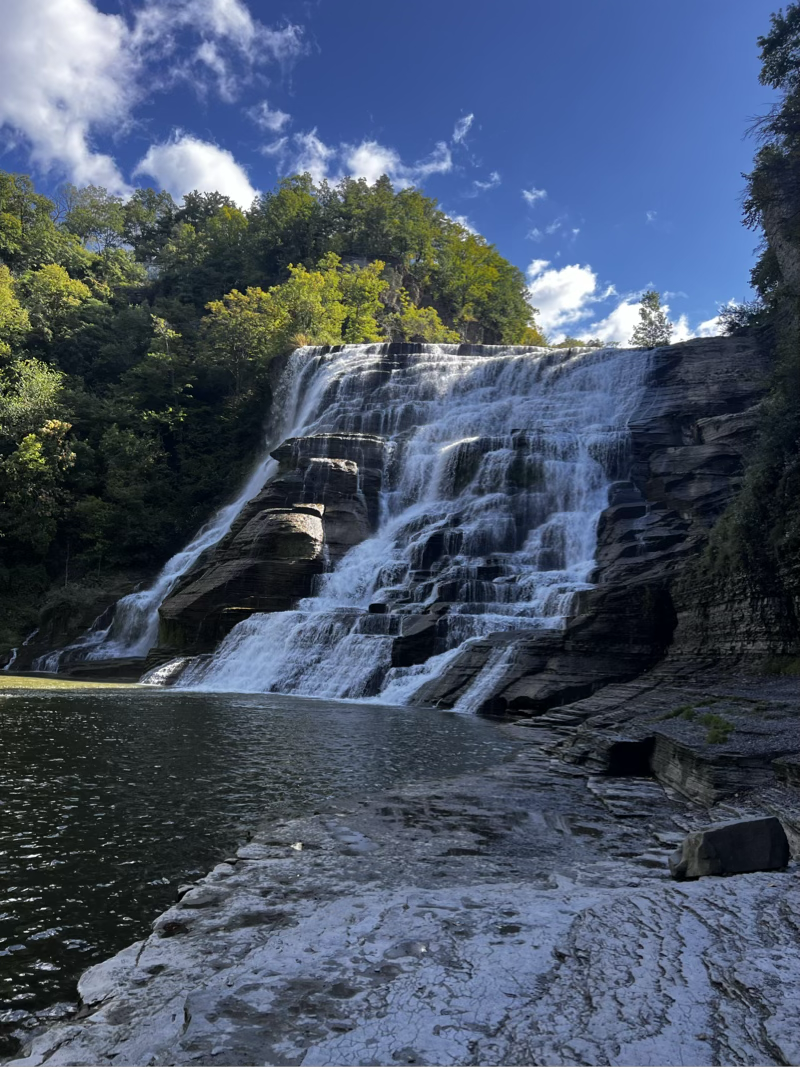
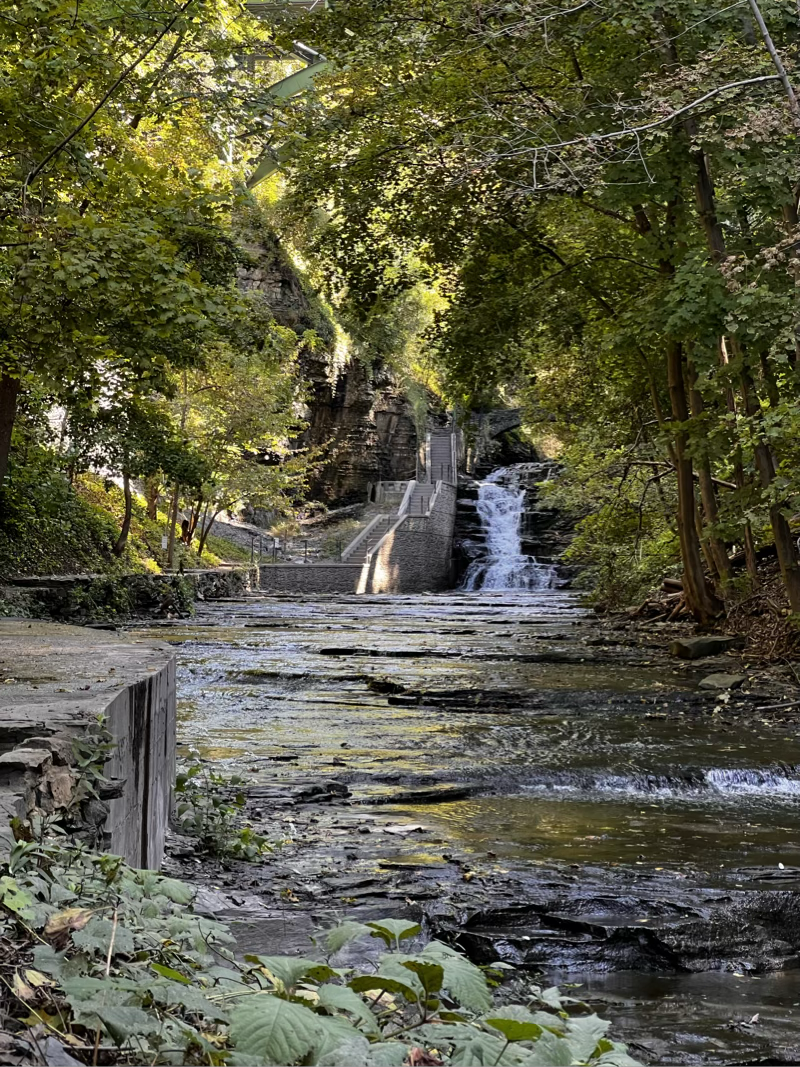
We headed over to the shore of Cayuga lake at Taughannock Falls state park. We at our sandwiches and enjoyed the lake, and I answered a couple of emails on my iPad. Our post lunch hike was to the falls. It was a nice flat hike leading back to the falls, where we also saw a group of Perigrine Falcons circling. These falcons can dive at speeds of 200mph to knock out their prey!
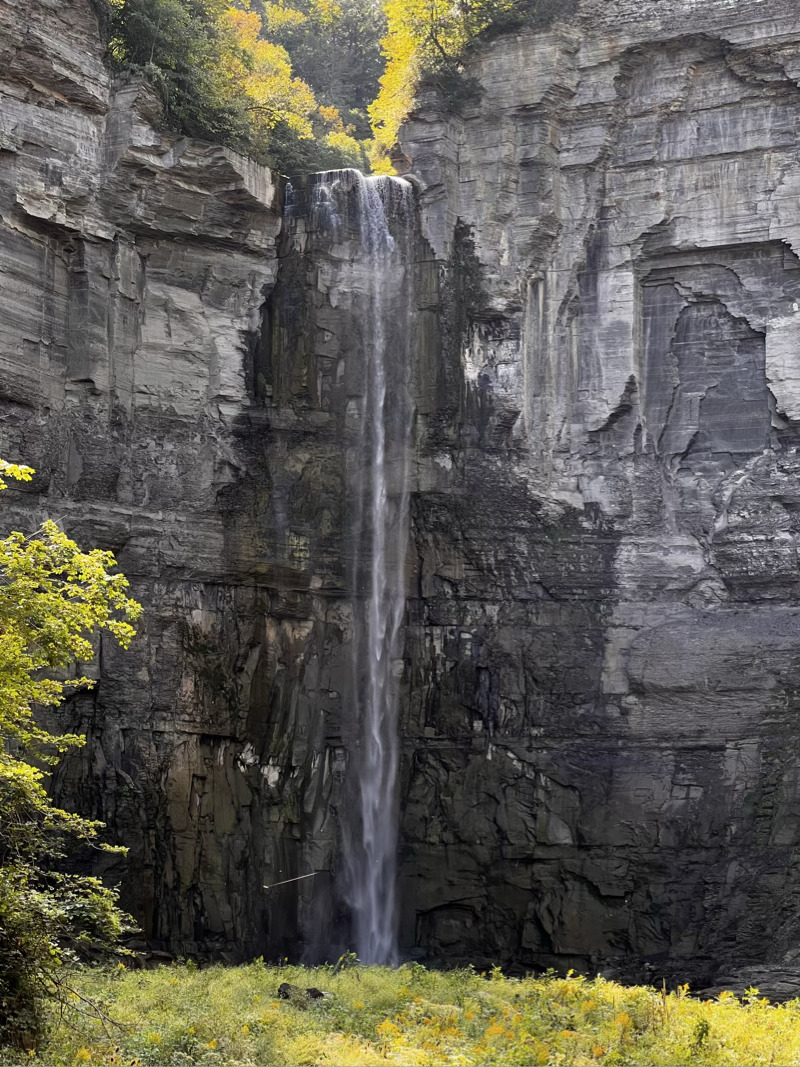
Although high, the water flow at these falls was very low. So after our hike we continued north along the lake to check out some wineries: Sheldrake Point, the Thirsty Owl, and Buttonwood grove. All had great views of the lake so we could sip and enjoy the view. We thought that the Thirsty Owl should be introduced to the Thirsty Otter in Balsam Lake. We are learning that there are lots of good wines in the region if not what we are used to. Most are more of a German style like a dry Riesling or even a dry Gewurstraminer on the white side. While the reds tend to be a little more traditional, but with Cab Franck being a bit more prevalent. We definitely found something to like everywhere.
We finished our wine tasting a little too early to head back to town for a dinner out. So we stopped at a the Finger Lakes Distillery along the way to enjoy the waning sun and more lake views, and a cocktail.

Next stop Stowe Vermont!
